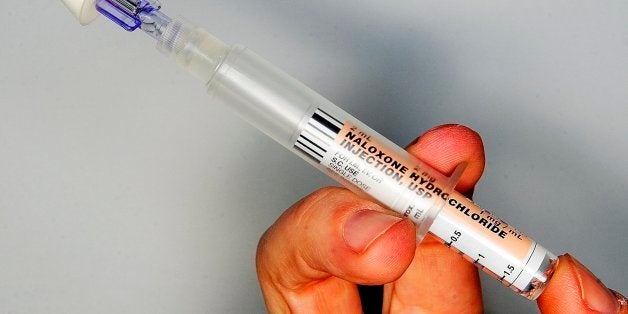
I still vividly remember the first time I saw naloxone in action. The day began like an average one at the drop-in center--with the buzz of conversation, ringing phones and chaotic sounds of an old action movie on the television. Suddenly there was a panicked cry over the din: "My friend's on the ground," someone shouted from the restroom, "I don't think she's breathing."
Several of us raced to investigate. Sure enough, a young woman--who I'll call Amy-- lay slumped against the wall, her head drooping to one side. Her lips seemed bizarrely blue.
But Amy was known to the staff as an active heroin user and they recognized what I had formerly only heard about in trainings. Amy was experiencing an opioid overdose. We needed to act fast to help save her life. A staff member carefully laid Amy fully on her back, shouted her name and pressed his knuckles into her breastbone (what's called a sternal rub), attempting to wake her. She remained limp and motionless. Someone called 911 as I began to perform rescue breathing.
Out of the corner of my eye, I saw a shot being administered in Amy's upper arm. After a couple of minutes, she took a huge gasping breath and abruptly sat up. We calmly explained what happened as she looked around in momentary confusion. Soon she was on her feet. A friend wrapped her in a relieved hug. Just like that, the crisis was over--thanks to naloxone.
Sometimes referred to as Narcan, naloxone is a life-saving medication. It helps the central nervous system "remember how to breath" when it would otherwise be overwhelmed by the depressive effects of opioids.
As Amy's story demonstrates, naloxone can save lives. It is generic, low-cost, and has no psychoactive effects. Naloxone is an opioid antagonist, meaning it works by blocking the opioid receptors in the brain.
Naloxone has few side effects, no abuse potential, and comes in several forms of administration, making it safe and easy to use. It is commonly given through intramuscular injection--like the shot in the deltoid Amy received-- or an intranasal spray. An electronic device with an auto-injector (similar to those used for epinephrine) is also available.
Since most overdose fatalities involve opioids, naloxone is an invaluable public health tool. Emergency departments have used it regularly since its approval by the FDA in 1971. In recent years, in the face of growing concerns about overdose deaths, many states have taken action to expand access to naloxone and encourage overdose witnesses to call 911.
Efforts are also underway to make naloxone more readily available in pharmacies. These vital reforms hinge on the simple fact that the most effective "first responders" are already on the scene when overdose emergencies arise. As in Amy's case, most people are not alone when they overdose--peers, friends or loved ones are often in the best position to intervene promptly when every moment counts.
Reflecting on my experience with Amy, it chills me to think that things could have unfolded very differently. Amy could have succumbed to brain damage or death while we stood by helplessly, an overdose cutting her life short, traumatizing those on the scene and bringing immeasurable suffering to her loved ones.
Without naloxone, that day at the drop-in center would have been heartbreaking, but instead of witnessing senseless tragedy I learned about humanity, fellowship, compassion and basic public health. Naloxone ultimately empowers us to help one another in the darkest moments and, with that, it inspires hope.
Amanda Bent is a policy coordinator with the Drug Policy Alliance.
This piece first appeared on the Drug Policy Alliance Blog:http://www.drugpolicy.org/blog/unforgettable-day-i-witnessed-naloxone-save-amys-life